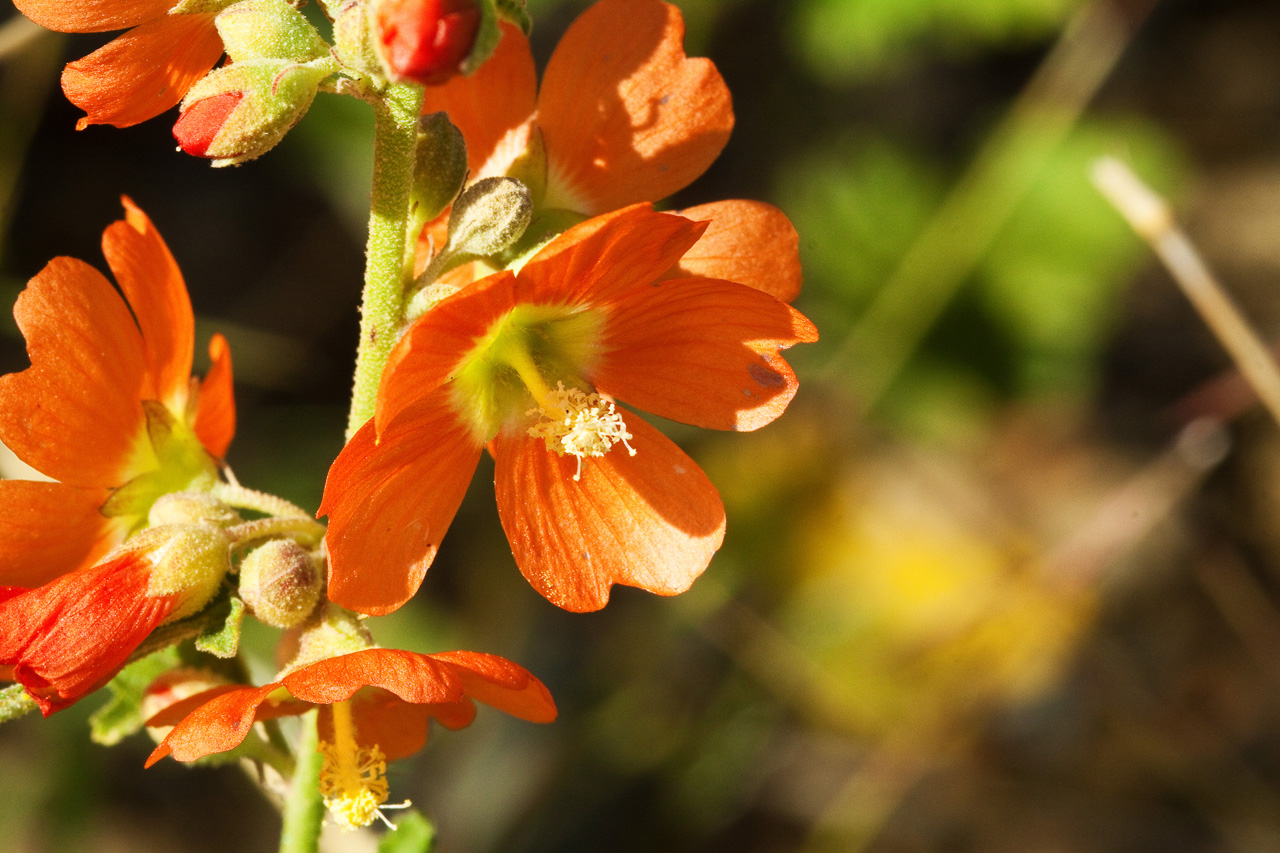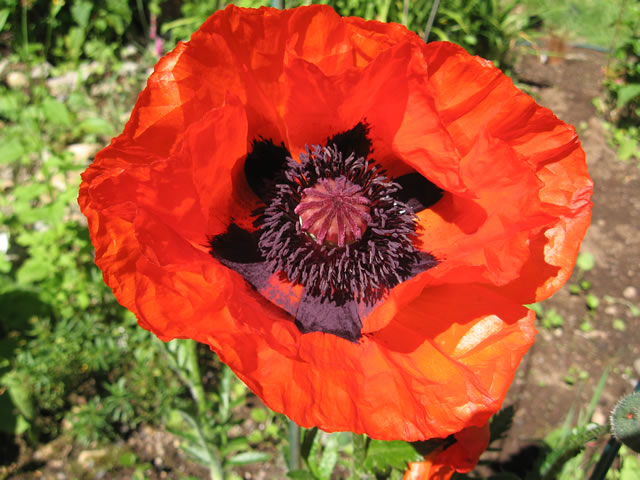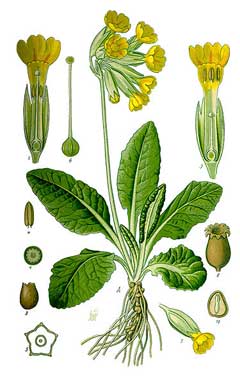Test I Plant ID Quiz

- 1.
What family is this flower in?
Explanation
The correct answer is Brassicaceae, Cruciferae. Both Brassicaceae and Cruciferae are alternative names for the same family of flowering plants. This family is commonly known as the mustard family or cabbage family. It includes many well-known plants such as broccoli, cauliflower, kale, and mustard.Rate this question:
- 2.
What family is this flower in?
- A.
Papaveraceae
- B.
Ranunculaceae
- C.
Cucurbitaceae
- D.
Malvaceae
Correct Answer
B. RanunculaceaeExplanation
The correct answer is Ranunculaceae. This family is commonly known as the buttercup family and includes a wide variety of flowering plants. Ranunculaceae is characterized by its herbaceous nature and its flowers, which typically have numerous petals and sepals. Some well-known members of this family include buttercups, columbines, and delphiniums.Rate this question:
-
- 3.
What family is this in?
- A.
Ranunculaceae
- B.
Malvaceae
- C.
Ericaceae
- D.
Primulaceae
Correct Answer
C. EricaceaeExplanation
The correct answer is Ericaceae. Ericaceae is a family of flowering plants that includes popular species such as blueberries, cranberries, and rhododendrons. These plants are typically found in acidic soil and are known for their evergreen leaves and bell-shaped flowers. The family is characterized by its unique floral structure, which includes fused petals and stamens that are often positioned inside the flower. Ericaceae plants are commonly found in temperate regions and have economic importance as ornamental plants, as well as for their edible fruits.Rate this question:
-
- 4.
Are these flowers complete or incomplete?
- A.
Complete
- B.
Incomplete
- C.
Option 3
- D.
Option 4
Correct Answer
B. IncompleteExplanation
The given question asks whether the flowers are complete or incomplete. The correct answer is "incomplete." This suggests that the flowers being referred to do not possess all the necessary parts or structures typically found in a complete flower, such as sepals, petals, stamens, and carpels.Rate this question:
-
- 5.
What family is this plant in?
Correct Answer
CucurbitaceaeExplanation
The plant belongs to the family Cucurbitaceae. This family includes various plants such as cucumbers, melons, pumpkins, and squashes. These plants are characterized by their trailing or climbing vines, large leaves, and often edible fruits. Cucurbitaceae is a diverse family that is widely cultivated for its agricultural and culinary uses.Rate this question:
- 6.
What family is this flower in?
Correct Answer
MalvaceaeExplanation
Malvaceae is the correct answer because it is the family to which the flower belongs. The family Malvaceae is a large family of flowering plants that includes around 244 genera and over 4225 known species. It is commonly known as the mallow family and includes various plants such as hibiscus, hollyhocks, and cotton. The flower in question belongs to this family, indicating that it shares certain characteristics and traits with other plants in the Malvaceae family.Rate this question:
- 7.
What family is this fruit in?
Correct Answer
PapaveraceaeExplanation
Papaveraceae is the correct answer because it is the family to which the fruit belongs. The family Papaveraceae includes various flowering plants, commonly known as poppies, and their fruits. Therefore, the fruit in question belongs to the family Papaveraceae.Rate this question:
- 8.
/What family is this flower in?
Correct Answer
PapaveraceaeExplanation
The correct answer is Papaveraceae because Papaveraceae is the family to which this flower belongs.Rate this question:
- 9.
This is one of Linnaeus' specimens. What kind of type specimen would it be?
- A.
Holotype
- B.
Paratype
- C.
Isotype
- D.
Lectotype
Correct Answer
D. LectotypeExplanation
An explanation for the correct answer, "Lectotype," is that a lectotype is a type specimen that is designated from a previously collected specimen, usually from a group of syntypes, to serve as the single name-bearing type specimen when the original type material is lost or destroyed. In this case, since it is mentioned that the specimen is one of Linnaeus' specimens, it implies that the original type material may no longer exist, and therefore a lectotype would be designated to serve as the reference specimen for that particular species.Rate this question:
-
- 10.
This plant has basal leaves and stamens opposite the petals. What family is this in?
- A.
Ericaceae
- B.
Primulaceae
- C.
Malvaceae
- D.
Salicaceae
Correct Answer
B. PrimulaceaeExplanation
The plant described in the question has basal leaves and stamens opposite the petals. This characteristic is commonly found in plants belonging to the Primulaceae family. Therefore, the correct answer is Primulaceae.Rate this question:
-
- 11.
This man was known as the Father of American Botany. Who is it?
Correct Answer
Asa GrayExplanation
Asa Gray is known as the Father of American Botany because of his significant contributions to the field. He was a renowned botanist and played a crucial role in the development of botany in America. Gray's extensive research and publications greatly advanced the understanding of plant taxonomy and morphology. He also established the first systematic botanical garden in the United States and was a prominent advocate for the study and conservation of native American plants. His immense contributions to the field of botany earned him the title of the Father of American Botany.Rate this question:
- 12.
What plant zone is this?
Correct Answer
alpineExplanation
The given answer "alpine" refers to the plant zone known as the alpine zone. The alpine zone is characterized by high altitudes and cold temperatures, typically found on mountains above the tree line. This zone is known for its harsh conditions and limited vegetation, with plants adapted to survive in extreme cold and strong winds.Rate this question:
- 13.
This botanist saved 2,000 type specimens from fire in the 1906 San Francisco earthquake. Who is she?
Correct Answer
Alice EastwoodExplanation
Alice Eastwood is the correct answer because she was a botanist who saved 2,000 type specimens from a fire during the 1906 San Francisco earthquake. Her actions in rescuing these specimens from destruction demonstrate her dedication to preserving botanical knowledge and her bravery in the face of a natural disaster.Rate this question:
- 14.
Zygomorphic flowers with a petaloid calyx and a polycarpous gynoecium best fits what family?
- A.
Malvaceae
- B.
Primulaceae
- C.
Salicaceae
- D.
Ranunculaceae
Correct Answer
D. RanunculaceaeExplanation
Zygomorphic flowers with a petaloid calyx and a polycarpous gynoecium are characteristic features of the family Ranunculaceae. This family includes many well-known flowers such as buttercups, columbines, and anemones. The flowers in this family typically have radial symmetry, with petals that are similar in shape and size. The petaloid calyx refers to the sepals of the flower that resemble petals. The polycarpous gynoecium means that the flower has multiple separate carpels, which are the female reproductive structures. Therefore, the correct answer is Ranunculaceae.Rate this question:
-
- 15.
Imperfect flowers arranged in catkins best fits what family?
- A.
Salicaceae
- B.
Cucurbitaceae
- C.
Ranunculaceae
- D.
Ericaceae
Correct Answer
A. SalicaceaeExplanation
Imperfect flowers arranged in catkins best fit the family Salicaceae. Salicaceae is a family of flowering plants that includes willows and poplars. Catkins are a type of inflorescence that consists of a spike or raceme of unisexual flowers. Imperfect flowers are those that lack either stamens or pistils. Salicaceae is known for having imperfect flowers arranged in catkins, making it the most suitable family for this description.Rate this question:
-
- 16.
What family is this in?
- A.
Ranunculaceae
- B.
Primulaceae
- C.
Ericaceae
- D.
Salicaceae
Correct Answer
D. SalicaceaeExplanation
Salicaceae is the correct answer because it is the family of flowering plants that includes willows and poplars. The other options, Ranunculaceae, Primulaceae, and Ericaceae, are also families of flowering plants, but they do not include willows and poplars. Therefore, Salicaceae is the most appropriate choice for the given question.Rate this question:
-
- 17.
What type of fruit is this?
Correct Answer
silique - 18.
What type of stamen arrangement is this?
Correct Answer
monadelphousExplanation
Monadelphous is a type of stamen arrangement where the filaments of the stamens are fused together into a single group. This is commonly seen in flowers where the filaments are joined at the base and form a tube or column around the pistil. The anthers of the stamens may be separate or fused together within this column. This arrangement can be observed in flowers of the pea family (Fabaceae) and some other plant species.Rate this question:
- 19.
What vegetation zone is this?
Correct Answer
plainsExplanation
The given answer "plains" indicates that the vegetation zone being referred to is the plains. The plains are characterized by flat or gently rolling land with fertile soil, making them suitable for the growth of various types of vegetation. This vegetation zone is often found in areas with moderate to low rainfall and is known for supporting grasslands and shrubs rather than dense forests.Rate this question:
- 20.
What type of fruit is this?
Correct Answer
aggregate of achenesExplanation
This fruit is an aggregate of achenes. An aggregate fruit is formed from multiple ovaries of a single flower, each developing into a small fruit called an achene. Examples of aggregate fruits include strawberries and raspberries.Rate this question:
Quiz Review Timeline +
Our quizzes are rigorously reviewed, monitored and continuously updated by our expert board to maintain accuracy, relevance, and timeliness.
-
Current Version
-
Mar 22, 2023Quiz Edited by
ProProfs Editorial Team -
Sep 18, 2014Quiz Created by
Jennifer
 Back to top
Back to top



















